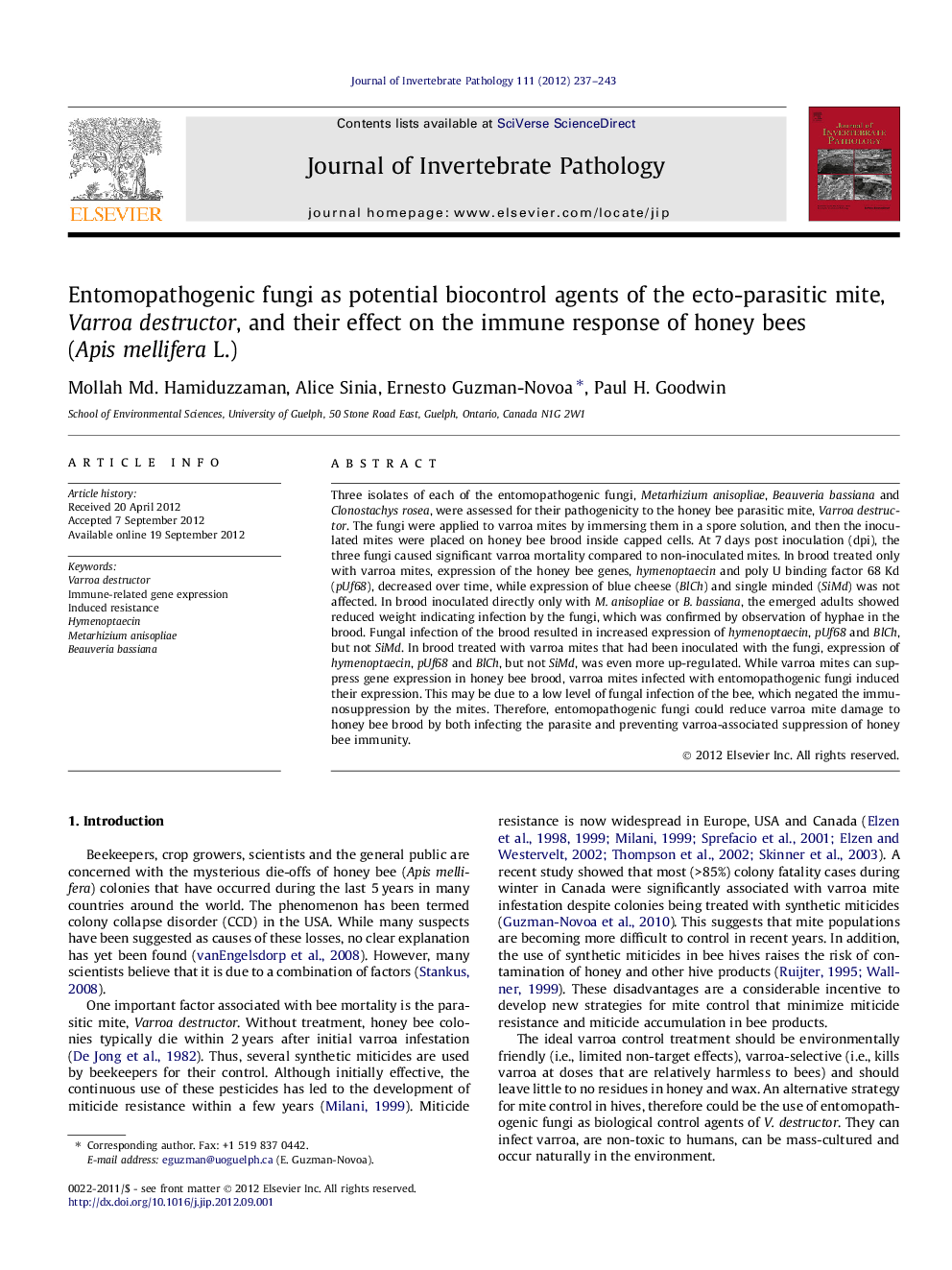| Article ID | Journal | Published Year | Pages | File Type |
|---|---|---|---|---|
| 4557864 | Journal of Invertebrate Pathology | 2012 | 7 Pages |
Three isolates of each of the entomopathogenic fungi, Metarhizium anisopliae, Beauveria bassiana and Clonostachys rosea, were assessed for their pathogenicity to the honey bee parasitic mite, Varroa destructor. The fungi were applied to varroa mites by immersing them in a spore solution, and then the inoculated mites were placed on honey bee brood inside capped cells. At 7 days post inoculation (dpi), the three fungi caused significant varroa mortality compared to non-inoculated mites. In brood treated only with varroa mites, expression of the honey bee genes, hymenoptaecin and poly U binding factor 68 Kd (pUf68), decreased over time, while expression of blue cheese (BlCh) and single minded (SiMd) was not affected. In brood inoculated directly only with M. anisopliae or B. bassiana, the emerged adults showed reduced weight indicating infection by the fungi, which was confirmed by observation of hyphae in the brood. Fungal infection of the brood resulted in increased expression of hymenoptaecin, pUf68 and BlCh, but not SiMd. In brood treated with varroa mites that had been inoculated with the fungi, expression of hymenoptaecin, pUf68 and BlCh, but not SiMd, was even more up-regulated. While varroa mites can suppress gene expression in honey bee brood, varroa mites infected with entomopathogenic fungi induced their expression. This may be due to a low level of fungal infection of the bee, which negated the immunosuppression by the mites. Therefore, entomopathogenic fungi could reduce varroa mite damage to honey bee brood by both infecting the parasite and preventing varroa-associated suppression of honey bee immunity.
Graphical abstractFigure optionsDownload full-size imageDownload as PowerPoint slideHighlights► Entomopathogenic fungi were tested for the control of Varroa in honey bee brood. ► The effects of fungi and mites on brood emergence and immunity were assessed. ► The fungi caused significant mite mortality but were detrimental to bee brood. ► Entomopathogenic fungi infect both varroa mites and bee brood. ► The fungi prevented varroa-associated suppression of honey bee immunity.
